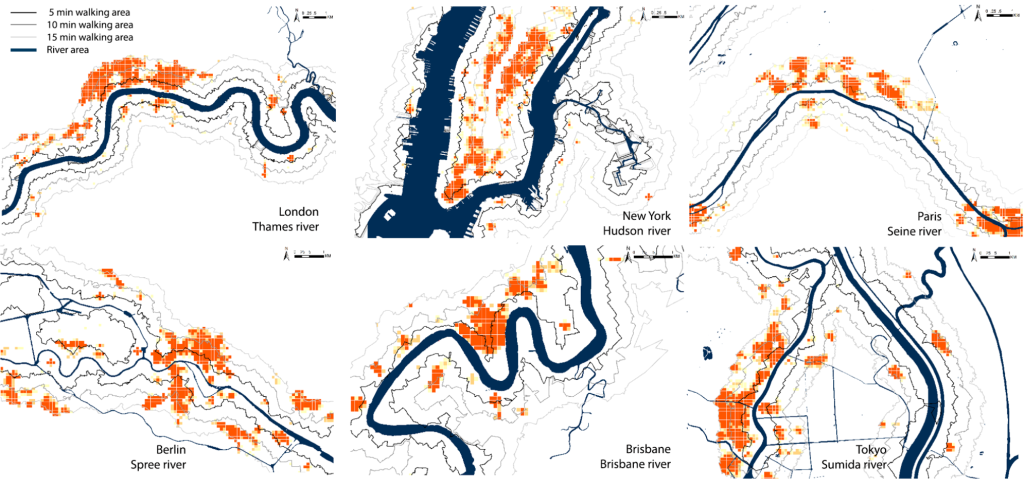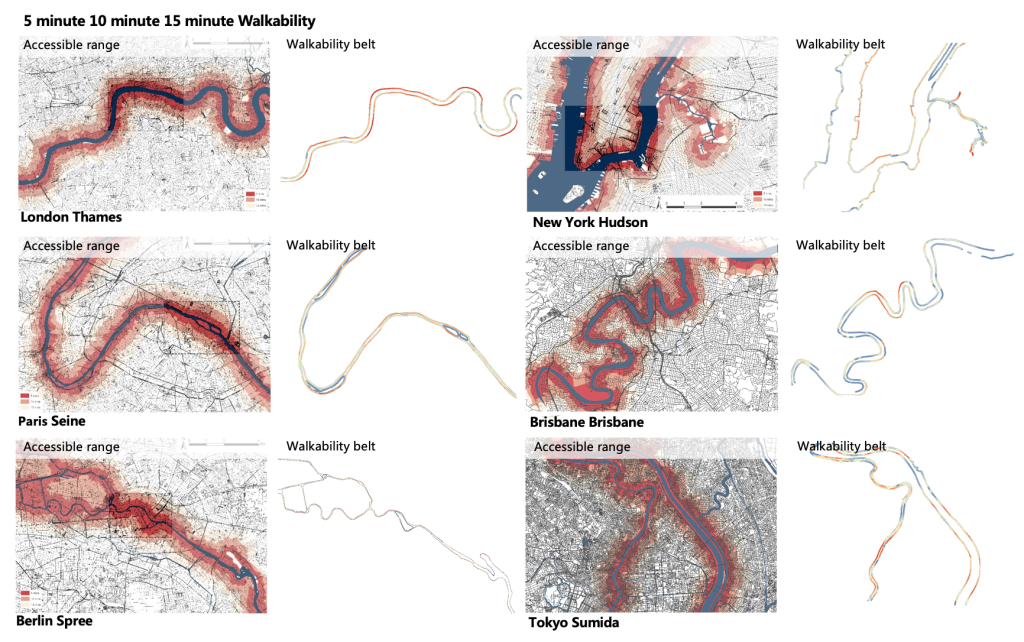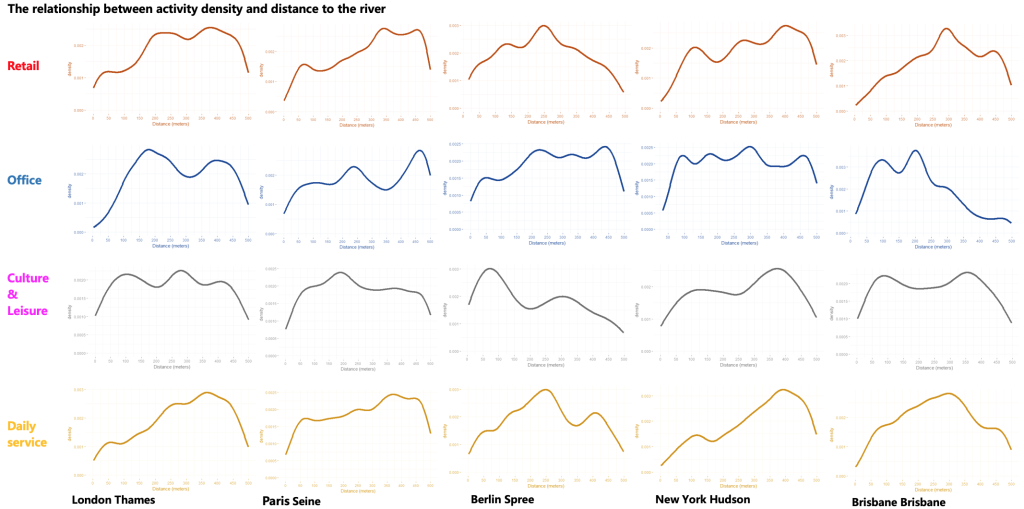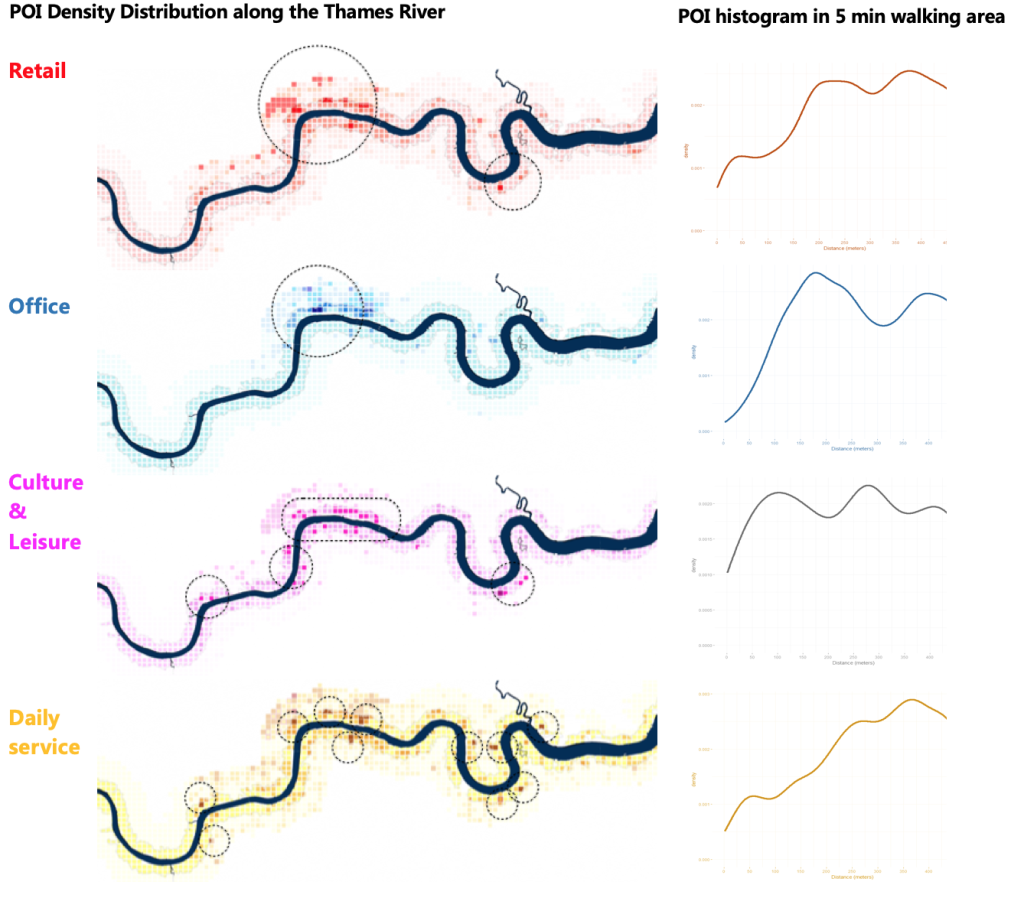This study aims to explore the relationship between commercial activities and the river by conducting a comparative study among the six world-class river cities. The commercial activity data was collected through Google Place API and the city geometry data was from Open Street Map. The visualization and data analysis were done in ArcGIS with the aid of python. The study was completed in 2017 under the supervision of Prof. Zhiqiang Siegfried Wu. Due to the confidentiality request, only part of the study is shown in this post.

The cities used to grow along the river. The impacts of river on building morphology and city structure still remain in today’s cities. As an attempt to unveil the relationship between rivers and city commercial activities, this study mapped out the city-scale commercial activities distribution in the six world-class river cities, including Berlin, Paris, New York, London, Brisbane and Tokyo.
Walkability along the river:
Riverbank pedestrian accessibility is closely related to the planning and design of the slow-moving traffic system and the shape of the river. The higher the density of the pedestrian network, the greater the pedestrian accessibility. Besides, the pedestrian accessibility in concave area is often higher than that in convex area.

Activity closeness to the river:
Different urban activity types show different “hydrophily”. Take London Thames as an example, High-density commercial area appears at 250m away from the river. The vitality of office activities stay closer to the river, the density of which reaches the peak around 150m away from river. Leisure and culture activity shows obvious hydrophilicity, which is combined with river landscape and historical wharf to fully tap the cultural and landscape value of the river.

Comparing four types of commercial activities, culture and leisure activities stay as close as possible to the river while the density of retail and office activities peak at around 200m from the river. The daily service activities are competitive enough in terms of rent affordability, so they usually stay far away from the river.

Openness & Activity
We further analyzed the relationship between building density and ecological environment along the rivers. It is found that the overall average building densities stay around 35% for the majority of cities.
